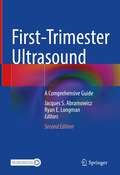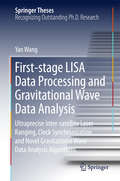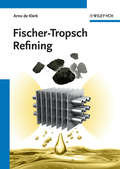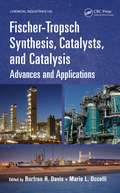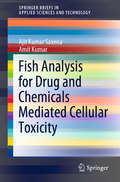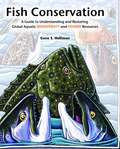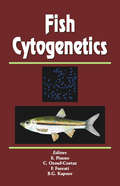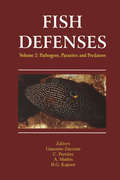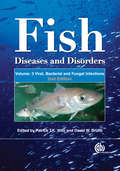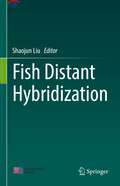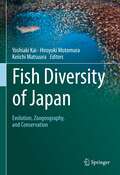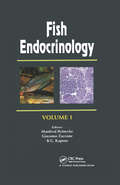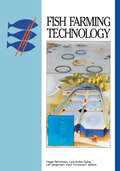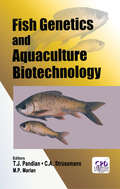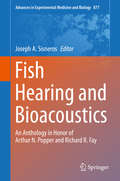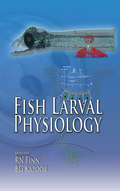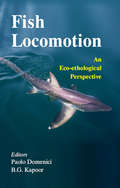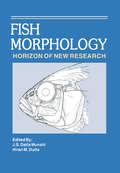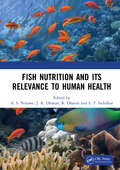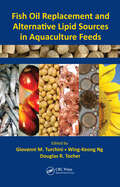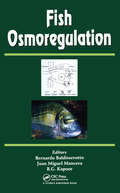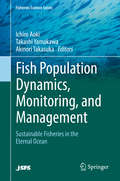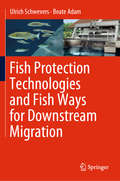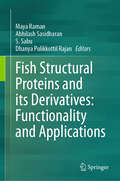- Table View
- List View
First-Trimester Ultrasound: A Comprehensive Guide
by Jacques S. Abramowicz Ryan E. LongmanThis second edition offers a unique and focused study of the use of ultrasound during the first trimester, a critical time in a fetus’ development. It includes basic examination guidelines as well as cutting-edge ultrasound modalities, including Doppler and three-dimensional ultrasound, for the period immediately preceding conception through early embryology. Fully updated, the text begins with a discussion of the safety and efficacy of diagnostic ultrasound and the use of this modality for the evaluation and treatment of infertility. Recognized experts in the field then explore conditions that may interfere with normal conception or development, including maternal diseases that would benefit from early scanning, elements of teratology, multiple gestations, ectopic pregnancy, gestational trophoblastic disease, fetal anomalies and invasive procedures in the first trimester. This edition includes seven new chapters focusing on the imaging of fetal development, including chapters on the first trimester fetal brain, genitourinary tract, and diagnosis of fetal genetic syndromes. Numerous illustrations, figures, and online videos serve as aides for understanding key concepts. First-Trimester Ultrasound, 2e is a valuable resource for many, in or after training, in obstetrics and gynecology, radiology, emergency medicine, family medicine and genetics.
First-stage LISA Data Processing and Gravitational Wave Data Analysis
by Yan WangThis thesis covers a diverse set of topics related to space-based gravitational wave detectors such as the Laser Interferometer Space Antenna (LISA). The core of the thesis is devoted to the preprocessing of the interferometric link data for a LISA constellation, specifically developing optimal Kalman filters to reduce arm length noise due to clock noise. The approach is to apply Kalman filters of increasing complexity to make optimal estimates of relevant quantities such as constellation arm length, relative clock drift, and Doppler frequencies based on the available measurement data. Depending on the complexity of the filter and the simulated data, these Kalman filter estimates can provide up to a few orders of magnitude improvement over simpler estimators. While the basic concept of the LISA measurement (Time Delay Interferometry) was worked out some time ago, this work brings a level of rigor to the processing of the constellation-level data products. The thesis concludes with some topics related to the eLISA such as a new class of phenomenological waveforms for extreme mass-ratio inspiral sources (EMRIs, one of the main source for eLISA), an octahedral space-based GW detector that does not require drag-free test masses, and some efficient template-search algorithms for the case of relatively high SNR signals.
Fischer-Tropsch Refining: Coal-to-liquids Production And Refining (Catalysis Ser. #4)
by Arno De KlerkThe Fischer-Tropsch process is gaining recognition again due to the world-wide increase in energy needs and decrease in oil availability. The increasing interest in utilizing biomass as a potential renewable feedstock in energy generation is further supporting this development. The book covers the production and refining of Fischer-Tropsch syncrude to fuels and chemicals systematically and comprehensively, presenting a wealth of new knowledge and material. As such, it deals extensively with aspects of engineering, chemistry and catalysis. This handbook and ready reference adopts a fundamental approach, looking at the molecules and their transformation from feed to product. Numerous examples illustrate the possibilities and limitations of Fischer-Tropsch syncrude as feesdstock. Of great interest to everyone interested in refining - not just Fischer-Tropsch specialists. From the Contents: Fischer-Tropsch Facilities and Refineries at a Glance Production of Fischer-Tropsch Syncrude Industrial Fischer-Tropsch Facilities Synthetic Transportation Fuels Refining Technology Refinery Design
Fischer-Tropsch Synthesis, Catalysts, and Catalysis: Advances and Applications (Chemical Industries Ser. #Vol. 142)
by Burtron H. Davis Mario L. OccelliWith petroleum prices spiraling upward, making synthetic fuels-or "synfuels"-from coal, natural gas, and biomass has become more economically competitive. Advanced energy companies now focus exclusively on alternative fuels, and many oil companies have programs dedicated to developing synthetic fuels. The Fischer-Tropsch process, which uses a colle
Fish Analysis for Drug and Chemicals Mediated Cellular Toxicity (SpringerBriefs in Applied Sciences and Technology)
by Amit Kumar Ajit Kumar SaxenaThis book offers a comprehensive overview of drug and chemical cellular toxicity, especially concerning the effects of anticancer drugs (cyclophosphamide, methotrexate and phosphamidon) on chromosomes and proteins. It covers histological changes in rat testis during pre- and postnatal exposure to varied drug doses, along with laboratory findings on arsenic exposure and alcohol consumption producing neurological changes and deleterious effects on reproductive health in animals. The book offers essential information on the role of anticancer drug- / chemical-mediated toxicity in connection with genetic changes in the brain and reproductive health, making it a valuable guide for researchers working in the areas of cancer research, infertility, molecular diagnostics and modern drug discovery, at biochemical and toxicity laboratories, and in genetic predisposition and molecular biology in general.
Fish Conservation: A Guide to Understanding and Restoring Global Aquatic Biodiversity and Fishery Resources
by Gene S. HelfmanFish Conservation offers, for the first time in a single volume, a readable reference with a global approach to marine and freshwater fish diversity and fishery resource issues. Gene Helfman brings together available knowledge on the decline and restoration of freshwater and marine fishes, providing ecologically sound answers to biodiversity declines as well as to fishery management problems at the subsistence, recreational, and commercial levels. Written in an engaging and accessible style, the book:considers the value of preserving aquatic biodiversityoffers an overview of imperiled fishes on a taxonomic and geographic basispresents a synthesis of common characteristics of imperiled fishes and their habitatsdetails anthropogenic causes of declineexamines human exploitation issuesaddresses ethical questions surrounding exploitation of fishesThe final chapter integrates topics and evaluates prospects for arresting declines, emphasizing the application of evolutionary and ecological principles in light of projected trends. Throughout, Helfman provides examples, explores case studies, and synthesizes available information from a broad taxonomic, habitat, and geographic range.Fish Conservation summarizes the current state of knowledge about the degradation and restoration of diversity among fishes and the productivity of fishery resources, pointing out areas where progress has been made and where more needs to be done. Solutions focus on the application of ecological knowledge to solving practical problems, recognizing that effective biodiversity conservation depends on meeting human needs through management that focuses on long term sustainability and an ecosystem perspective.
Fish Cytogenetics
by E. PisanoIn the past 20 years, fish cytogenetics has become an essential tool in fields as diverse as systematics and evolution, conservation, aquaculture and more recently, genomics. This book is organized in four sections (systematics and evolution; biodiversity conservation; stock assessment and aquaculture; genomics) covering the major fields of present
Fish Defenses Vol. 2: Pathogens, Parasites and Predators
by Giacomo ZacconeDramatic changes in the environment, including habitat degradation and climate change, have focused attention on how individuals and populations respond to a shifting biotic and abiotic landscape. A critical step toward meeting this goal is a clear understanding of the capacity of individuals to defend themselves against threats. Changes in water q
Fish Diseases and Disorders, Volume 3: Viral, Bacterial and Fungal Infections (2nd edition)
by Patrick T. K. Woo David W. BrunoThis third and final volume in the acclaimed Fish Diseases and Disorders trilogy addresses infectious diseases of finfish and shellfish caused by viruses, bacteria and fungi. Topics covered include infectious pancreatic necrosis virus, infectious hematopoiectic necrosis virus, viral diseases of cold- and warm-water fish, rickettsial and chlamydial infections, furunculosis, motile aeromonads, vibriosis, flavobacterial diseases and shellfish diseases. Written by experts in each discipline and updated throughout to reflect new developments in the field, including new chapters on alphaviruses, oncogenic viruses and genomics and proteomics, this is a must-have reference for fish health specialists and veterinarians, microbiologists, zoologists and researchers, and students in aquaculture.
Fish Distant Hybridization
by Shaojun LiuThe book introduces fish distant hybridization, which covers the basic theory and applications of fish distant hybridization as well as the main biological characteristics of different ploidy fish at the individual, tissue, cell, and molecular level. It is divided into 12 Chapters. The research progresses of animal distant hybridization and polyploids in domestic and overseas are summarized in this book. The characteristics of these hybrids and polyploid fish are also illustrated on basis of considering factors of the chromosomes numbers, phylogenetic relationship, reproduction, appearance, feeding habits, growth rate, and stress resistance. The creation of fish distant hybridization lineages will provide a clear genetic background which is helpful for the study of the strain generation as a model in genetic variation characteristics and reproductive characteristics. Fully illustrated in color, this book provides unique ideas in system description and presentation of distant hybridization and polyploidy fish. In fish genetic breeding, the tetraploid fish lineage and diploid fish lineage, formed through distant hybridization, can be used for preparing large-scale triploid and diploid fish. This book is a useful reference for researchers in fish genetic breeding, aquaculture, developmental biology, and animal evolution, and serves as a valuable resource for students and researchers engaging in zoology, evolutionary biology, and genetics.
Fish Diversity of Japan: Evolution, Zoogeography, and Conservation
by Yoshiaki Kai Hiroyuki Motomura Keiichi MatsuuraThis book reviews and summarizes the studies on the fish diversity of Japan. It covers the present knowledge of ichthyofauna, habitat distribution, phylogeography, ecology, morphology, and conservation, as well as the history of ichthyology and fish collections in Japan. The book comprises five parts: I. Fish Diversity and Ichthyology of Japan, II. Habitat Distribution and Species Diversity, III. Diversity within Species: Phylogeographic Perspective on Japanese Fishes, IV. Morphological and Ecological Diversifications, and V. Conservation of Fish Diversity in Japan. The Japanese Archipelago is surrounded by two major warm and one cold currents. It is located in the western North Pacific and encompasses several climatic regimes from north to south. Although the land area of Japan is small, the Exclusive Economic Zone (EEZ) of Japan ranks as the sixth largest in the world, including several marginal seas (Sea of Okhotsk, Sea of Japan, and East China Sea), and deep trenches (Izu-Ogasawara, Japan, and Kurile Trenches). Owing to a variety of marine habitats and a complex geological history, Japan has a rich fish species diversity, representing over 4,500 species in 370 families. The richness of fish species diversity has attracted many scientists since the late 1700s, and continuous studies have led to the development of ichthyology in Japan. With chapters written by leading experts in the field, the book will provide a stimulating and reliable resource for future research and contribute to the progress of ichthyology of the world.
Fish Endocrinology (2 Vols.)
by Giacomo Zaccone B. G. Kapoor Manfred ReineckeDuring the past two decades, fish endocrinology has witnessed exciting developments due to our increased knowledge at all levels of biological organizations, including molecular biology, cell biology, physiology and behavior. New insights into development, neurobiology, immunology and molecular genetics closely correlated with classical aspects of
Fish Farming Technology
by H. Reinersten L.A, Dahle L. JorgensenOver the past few years, it has become more and more obvious that fish farming will become increasingly important in the future. As fish farming moves into its industrial phase, technology will be an important factor in determining its successful development. It is therefore important for scientists & representatives from the aquaculture industry to meet to define state of the art and explore future development of fish farming technology for different fish species. 81 papers and abstracts were presented at the conference. The proceedings reflect the different sections of the conference: the plenum sessions and three parallel sessions: Juvenile marine fish, open production plants, closed production plants and poster sessions.
Fish Genetics and Aquaculture Biotechnology
by T. J. Pandian C. A. Strüssmann M. P. MarianTo feed the growing world population, water is looked upon as a major source of food production. This book is an attempt to bring out a comprehensive volume on Fish Transgenesis, Chromosome Engineering and Sex Control, Molecular Endocrinology, Microbal Diseases and Vaccines, and Bioactive Compounds.
Fish Hearing and Bioacoustics
by Joseph A. SisnerosFish Hearing and Bioacoustics is an anthology of review papers that were presented at a special symposium to honor Arthur Popper and Richard Fay on May 25th 2013 at the Mote Marine Laboratory in Sarasota, FL. The research presentations at this conference spanned the range of disciplines covered by Fay and Popper during their long and productive careers. The book includes the following thematic areas for the papers in this special volume: morphology and anatomy of the inner ear and lateral line systems; physiology of inner ear, lateral line, and central auditory systems; acoustically mediated behavior, including communication and sound localization; and environmental influences on fish hearing and bioacoustics, including anthropogenic effects of noise on fishes. Each chapter reviews and summarizes the past studies of particular area that will lead the reader up to the current work presented at the symposium. In addition, each chapters includes a perspective of how Arthur Popper and Richard Fay have influenced their particular area of fish bio acoustic research. Each manuscript also includes a hypotheses for future studies. These hypotheses will provide a springboard for future work in each field.
Fish Larval Physiology
by Rn Finn Bg KapoorThis book is intended as a resource for students and researchers interested in developmental biology and physiology and specifically addresses the larval stages of fish. Fish larvae (and fish embryos) are not small juveniles or adults. Rather they are transitionary organisms that bridge the critical gap between the singlecelled egg and sexually immature juvenile. Fish larvae represent the stage of the life cycle that is used for differentiation, feeding and distribution. The book aims at providing a single-volume treatise that explains how fish larvae develop and differentiate, how they regulate salt, water and acid-base balance, how they transport and exchange gases, acquire and utilise energy, how they sense their environment, and move in their aquatic medium, how they control and defend themselves, and finally how they grow up.
Fish Locomotion: An Eco-ethological Perspective
by Paolo DomeniciFish accomplish most of their basic behaviors by swimming. Swimming is fundamental in a vast majority of fish species for avoiding predation, feeding, finding food, mating, migrating and finding optimal physical environments. Fish exhibit a wide variety of swimming patterns and behaviors. This treatise looks at fish swimming from the behavioral and
Fish Morphology: Horizon Of New Research
by HiranM. DuttaTopics covered in this volume include: transformation morphology on structures in the head of cichlid fishes; the structure and function of fish liver; atretic follicles and corpora lutea in the ovaries of fishes; effects of gill dimension on respiration; and the efects of pesticides on fish.
Fish Nutrition And Its Relevance To Human Health
by A. S. NinaweThe book on Fish Nutrition and Its Relevance to Human Health is an important document in fillingthe gap of requisite fish nutrition and sustainable aquaculture in different agro-climatic zones andits relevance to human health. The book includes 14 chapters addressing various aspect of nutritionalrequirement of cultivable finfishes of freshwater, brackish water and marine eco systems includingcold water and valley region fisheries. Various aspects on larval and adult feeding with cultivation andintensification of live food organisms including copepods is discussed. Aspects on immunomodulation,role of digestive enzymes and nutraceuticals, probiotics including nutrigenomics have been welldocumented. Post harvest and value addition aspects have been the important contribution for fishfarming and human nutrition value. A topic has been included on water quality management for safehusbandry practices on bio-flock technology and its relevance for sustainable aquaculture farmingsystems in a book on fish nutrition and its relevance to human health. Note: T&F does not sell or distribute the Hardback in India, Pakistan, Nepal, Bhutan, Bangladesh and Sri Lanka.
Fish Oil Replacement and Alternative Lipid Sources in Aquaculture Feeds
by Giovanni M. Turchini Wing-Keong Ng Douglas R. TocherExperts are predicting that demand for marine fish oil will soon outstrip supply, creating extreme urgency within the global aquafeed industry to find viable alternatives. Fish Oil Replacement and Alternative Lipid Sources in Aquaculture Feeds is the first comprehensive review of this multifaceted, complex issue. It also addresses the crucial quest
Fish Osmoregulation
by B. G. Kapoor Bernardo Baldisserotto Juan Miguel ManceraFish lives in environments with a wide variety of chemical characteristics (fresh, brackish and seawater, acidic, alkaline, soft and hard waters). From an osmoregulatory point of view, fish have developed several mechanisms to live in these different environments. Fish osmoregulation has always attracted considerable attention and in the last years several studies have increased our knowledge of this physiological process. In this book several specialists have analyzed and reviewed the new data published regarding fish osmoregulation. The chapters present an integrative synthesis of the different aspects of this field focusing on osmoregulation in specific environments or situations, function of osmoregulatory organs, general mechanisms and endocrine control. In addition, interactions of osmoregulatory mechanisms with the immune system, diet and metabolism were also reviewed. New emerging techniques to study osmoregulation has also been analysed.
Fish Population Dynamics, Monitoring, and Management: Sustainable Fisheries In The Eternal Ocean (Fisheries Science Ser.)
by Ichiro Aoki Takashi Yamakawa Akinori TakasukaThis book explores how we can solve the urgent problem of optimizing the use of variable, uncertain but finite fisheries resources while maintaining sustainability from a marine-ecosystem conservation perspective. It offers readers a broad understanding of the current methods and theory for sustainable exploitation of fisheries resources, and introduces recent findings and technological developments. The book is divided into three parts: Part I discusses fish stock dynamics, and illustrates how ecological processes affecting life cycles and biological interactions in marine environments lead to fish stock variability in space and time in major fish groups; small pelagic fish, demersal fish and large predatory fish. These insights shed light on the mechanisms underlying the variability in fish stocks and form the essential biological basis for fisheries management. Part II addresses the technologies and systems that monitor changes in fisheries resources and marine ecosystems using two approaches: fishery-dependent and fishery-independent data. It also describes acoustic surveys and biological sampling, as well as stock assessment methods. Part III examines management models for effectively assessing the natural variability in fisheries resources. The authors explore ways of determining the allowable catch in response to changes in stock abundance and how to incorporate ecological processes and monitoring procedures into management models. This book offers readers a broad understanding of sustainable exploitation as well as insights into fisheries management for the next generation.
Fish Protection Technologies and Fish Ways for Downstream Migration
by Beate Adam Ulrich SchweversThis book offers a comprehensive review of current systems for fish protection and downstream migration. It offers the first systematic description of the currently available technologies for fish protection at hydropower intakes, including accurate and timely data collected by the authors and other researchers. It describes how to design and test them in agreement with the guidelines established from the EU Water Framework Directive. The book includes important information about fish biology, with a special focus on swimming and migration mechanisms. It offers a robust bridge between concepts in applied ecology and civil hydraulic engineering, thus providing biologists and hydraulic engineers with an authoritative reference guide to both the theory and practice of fish protection. It is also of interest for planners, public authorities as well as environmental consultants
Fish Respiration and Environment
by Marisa N. FernandesGills of healthy fishes are their lifeline to meet the challenges arising from their changing environment: oxygen gradient, alkalinity, temperature fluctuations and the added pollutants. The diverse and ever changing aquatic environment has a major impact on the organization of various organ-systems of fishes. This book contains seventeen chapters
Fish Structural Proteins and its Derivatives: Functionality and Applications
by Maya Raman Dhanya Pulikkottil Rajan Abhilash Sasidharan S. SabuThis book brings out a comprehensive collection of information on the structural proteins of fish in both marine and fresh water system. The main focus of this book is to address all relevant aspects of structural proteins of fish and its commercial significance. Fish is a rich and cheap source of protein, and the collagen and myofibrillar proteins, play a key role in food and pharmaceutical industries. Marine-based collagen due to its unique properties have fewer risks of transmitting diseases. These have low molecular weight, are biocompatible, lack religious constraints, and involves cost-effective extraction process. Therefore, it finds wide biomedical applications. The details of its extraction, isolation and characterization, supported with photographs and flow-charts are provided. This book also discusses the different peptides and derivatives of proteins that may have beneficial health significance and other commercial importance. Further, the application of bioinformatics and artificial intelligence in understanding the protein structure in-silico are also discussed in detail. This book is of interest and useful to students, academician, researchers and industrialists/ entrepreneurs, and is a valuable source of reference to the relevant researchers/ students.
